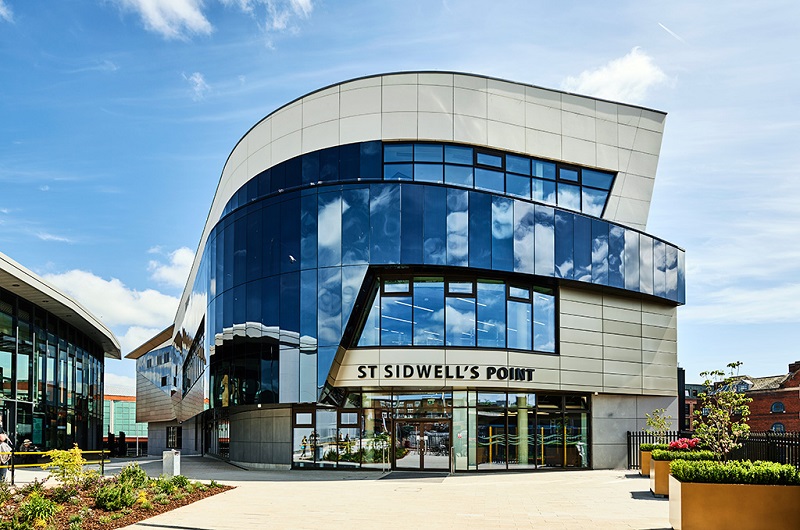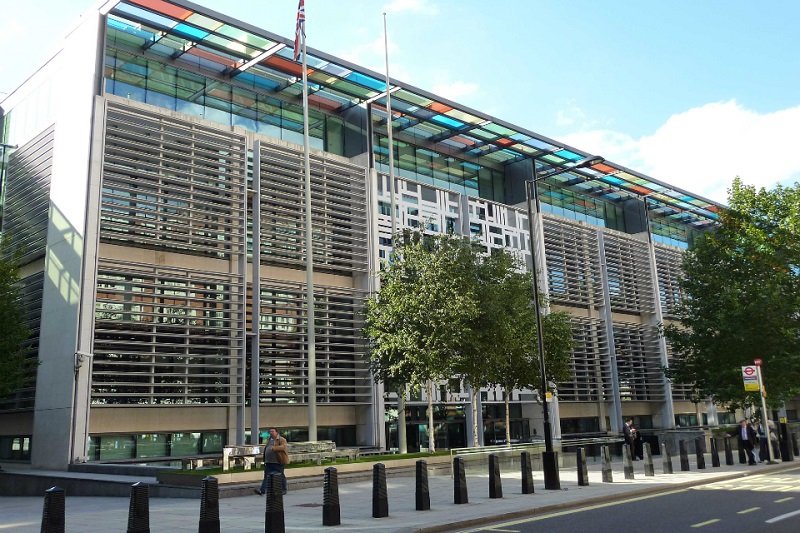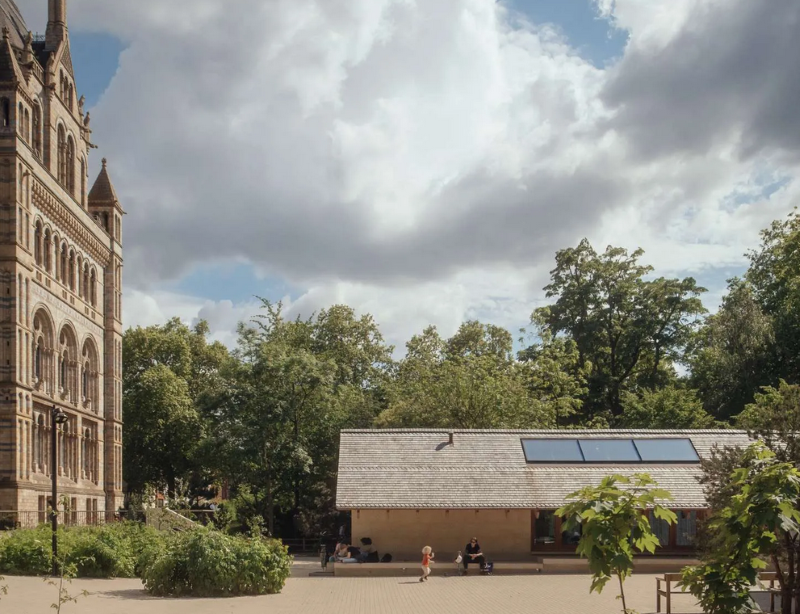The Chartered Institute of Architectural Technologists (CIAT) is delighted to announce the winners for its annual AT Awards.
Presented by the President, Kevin Crawford PCIAT, on 21 October 2022, the Awards celebrate outstanding achievements in Architectural Technology for both students and practitioners.
The event, hosted by Matt Allwright, was attended by a cross section from the built environment sector and showcased Architectural Technology, both in practise and as a key academic discipline, demonstrating the growth and impact within the UK and internationally.

The 2022 winners are:
The Emerging Talent in the Technology of Architecture
Winner: Sam Lambert ACIAT
Sam’s development and contribution as an Architectural Technologist is firmly bolstered by his ambitious and determined professional mindset. It is this mindset that sets Sam apart as an emerging young professional at P+HS Architects which has been demonstrated by his achievements and willingness to work individually, or collaboratively as part of a team, to yield the highest possible outcomes with the task in hand.
Extract from Sam’s citation – the full citation is available upon request.
The Award for Excellence in Architectural Technology | Small to Medium
Winner: Martello Café, PLAICE Design Company Ltd
The brief for this commercial project was to create an iconic café/restaurant building to act as a focal point for the regeneration of Felixstowe’s south seafront. The Chartered Architectural Technologists have skilfully combined technical and aesthetic design solutions creating a stunning new café with a unique and striking presence within this coastal landscape.
The use of BIM technology assisted the design team to resolve complex construction detailing related to the striking roof structure and integrated services. Combined with sustainable innovative ventilation and heating design, they achieved the client’s brief through a combination of natural and technological methods. A great choice of materials for both the location and performance combine to provide a robust construction with credible eco-credentials.
This is an exemplary demonstration of how Architectural Technology has been utilised throughout the design and construction process, making it a truly outstanding winner for the Award for Excellence in Architectural Technology, small to medium projects category.
Highly Commended: Willis Road, PiP Architecture
Located within the central Cambridge conservation area, this is an excellent example of a contemporary extension and conversion of an existing Edwardian style semi-detached townhouse, from flats back to a family home.
The Architectural Technologists have designed an excellent modern extension with an improved energy performance and innovative solutions across the board to maximise internal space and provide a flexible layout with solid detailing between the old and new.
Bringing together locally sourced materials, a lightweight green roof and frameless glazing help to enhance the light open plan living areas and the integration of interior to the natural external landscape. This is a great example of the role of Architectural Technology, taking many strands of a complex project and weaving them into a great technical solution.
Commended: 19a Weston Hills Road, Studio 11 Architecture
19a Weston Hills Road is a multi-generational home located in the Lincolnshire Fens which achieves the client’s brief in terms of usability and sustainability, with a wide range of technical solutions. A creative and striking design using the innovation of Architectural Technology with solid detailing and consideration to both the site and planning constraints. A sound fresh approach to surface water drainage delivering a solid technical solution to a design criterion.
The Award for Excellence in Architectural Technology | Large to Mega
Winner: St Sidwell's Point, Gale & Snowden Architects Ltd
As the UK’s first Passivhaus-certified leisure centre, St Sidwell’s Point in Devon is a high performing building, both in terms of energy consumption/thermal envelope and incorporating building biology best practice in healthy building design. An example of collaborative working to achieve an exemplary project, putting accessibility high on the priority list.
The Chartered Architectural Technologist has skilfully used technology to achieve a sustainable building with attention material specification including triple glazed windows and large glue-laminated timber trussed beams. The Judges were particularly impressed by the strong emphasis put on the technical detailing to meet such stringent requirements. The louvred panels design was a great solution - air, weather and vapour tight - providing excellent thermal continuity between the external wall and ductwork.
The use of technology to achieve super-energy-efficient Architectural Technology uniquely combined with all the other aspects of this project, demonstrate superb technical excellence and as such is a truly outstanding winner of the Award for Excellence in Architectural Technology in the large to mega category.
Highly Commended: Troutbeck Housing Development, Cassidy+Ashton Group Ltd
Troutbeck is a new residential development in Blackpool using conventional timber frame open panel construction and trussed rafters – an exemplary and well considered use of materials addressing sustainability and performance.
An inclusive, functional and adaptable design with strong technical detailing, consideration to context and striking aesthetic. There is strong evidence in relation to the technical design and detailing associated with buildability and assembly. A great example of Architectural Technology in residential design.
Student Award for Excellence in Architectural Technology | Project
(recognising outstanding design achievement in Architectural Technology based upon a university/college assignment)
Winner: Between the Bridges Regeneration, Ian Westhead ACIAT, Solent University
This is a varied development which includes a cultural landmark with residential and retail units on a three-acre brownfield site. Ian has tackled this complex project head on and impressed the judges by displaying a wide range of skills in his presentation. A rich mix of styles really sets this submission apart, with Ian’s great eye for detailing and the execution of the more complex junctions in the development. Along with Ian’s fantastic design skills, he has a building that compliments the urban riverside setting for the selected site. The elevations are thoroughly thought out – the steel alignment, colour scheme and overall material mix is excellent.
This is a well resolved technical design solution with developed annotation and a fine level of attention to fire and sustainability. A lot of the features are thought through considerably and add to the overall nature of the proposal. With all this combined, this project is a standout as a Winner for the Student Award for Excellence in Architectural Technology | Project.
Highly Commended: Culinary Growth Incubator, Adam Lunney ACIAT, Anglia Ruskin University
The Culinary Growth Incubator provides a circular ecosystem to grow, harvest, study, assemble, sell, consume, and reuse or repurpose food sustainably at source. This carefully thought through design incorporates several unique features. The attention to buildability was evident in many parts of the presentation with commentary that every nut and washer on the details could be seen! The exemplary details are supported superbly with axonometric and exploded 3D details.
Adam has taken a bold step in incorporating an innovative structural frame which not only adopts offsite prefabrication principles but also uses a kit or parts principal for ease of assembly.
Commended: ARC517 Sirocco Quays: Multi-Generational Residential Scheme, Hannah Irwin, Ulster University
Hannah’s proposed redevelopment will extend and bring life to the East Bank of the River Lagan, creating a vibrant, new waterfront urban quarter. With pleasing space planning, excellent visuals and building form, the design is well thought out and resolved.
The judges were unanimous in their agreement that this scheme has been reviewed in detail with an exemplary grasp of the requirements for such a project, in particular the consideration of and life safety. The way clear and logical detailing has been enhanced with 3-dimensional exploded callouts shows Hannah’s grasp of technology at key junctions, and in the layering of materials.
Student Award for Excellence in Architectural Technology | Report
(recognising outstanding research achievement in Architectural Technology from a dissertation assignment)
Winner: The Potential for Digital Construction Technologies to Advance Fire Evacuation Procedures, Eilis O’Hare, Ulster University
Eilis’ report is a study which presents the novel concept of linking a QR code to a live Building Information Model in Autodesk Revit to deliver a 3D instructional escape route based on the location of the building occupant. The judges were impressed by the simplicity of the concept and how it has been applied to a key principle of the Chartered Architectural Technologist; the use of the technology of design to produce successful design solutions for the benefit of all building users. It was thought that this was a highly innovative use of everyday technology that could benefit all.
The Report draws on recent research and is comprehensively referenced with excellent cohesive aims and objectives. The technological framework for utilising BIM models and Bluetooth- based real time location systems builds on the success of similar studies and suggests that an intelligent BIM system could be the answer to presenting clear and personalised escape routes to building users.
This work is a brilliant example of excellence in Architectural Technology and an exemplar for the Student Award Report category.
Highly Commended: Noise Reduction and Soundscape Design in Urban Green Spaces (UGS), Ebony Napier, Nottingham Trent University
This is a methodical and well-articulated Report by Ebony on the most effective types of noise reducing barriers to mitigate the volume of noise pollutants perceived within an urban green space. This was not only an interesting subject but one that was highly relevant and of interest to all those within the discipline.
Ebony has clearly completed a substantial amount of research into the problem and demonstrated a sound knowledge of the issue faced in the UK. The work follows a systematic approach and natural flow, from its introduction through to its clear analysis and inciteful conclusions.
The use of simulation-based research was a real highlight of the work, as was Ebony’s excellent writing style.
Commended: Determining Optimal Diffuser Geometry and Application Strategies to Enhance Acoustic Performance Within a Concert Hall, Sarah Ball, Nottingham Trent University
Sarah's thorough introduction to this issue highlights the importance of this study not just to achieve good acoustic conditions, but also to improve the impact of poor conditions on the health of both concert hall users and musicians. Sarah conveys a deep knowledge and passion for the subject area and a determination to fully explore and come to useful conclusions. The 3D modelling technique reflected Sarah’s focused approach in that it removed unnecessary information and made optimal use of her resources to achieve the best possible results.
It was agreed that the research discussion was built from very strong knowledge foundations, with appropriate use of software and an excellent literature review. Sarah’s report will be of significance to anyone within the Architectural Technology discipline.
The Institute also presented the inaugural recipients of the Honorary Fellow, the highest accolade that can be bestowed on non-members in recognition of their outstanding contribution to the discipline:
Honorary Fellow, HonFCIAT
Recipient: Francesca Berriman MBE HonDTech
Francesca is one of that handful of figures who have changed the course of Architectural Technology history through the sheer force of their talent and determination. She has revolutionised the discipline and successfully built upon its foundations and turned it into the respected and leading profession in the sector that it is today. The Honorary Fellow is given to an individual who has, in a fundamental way, advanced Architectural Technology. For that reason, I nominate Francesca Berriman and her incalculable contribution to the discipline.
Extract from Francesca’s citation – the full citation is available upon request.
Recipient: Professor Jaffer A A Khan PhD
Jaffer is passionate about the technology of architecture, and he has an impressive gift of being able to enthuse and influence others too, from students to senior decision makers. As an Honorary Fellow of the Institute, his advocacy for the discipline, profession and Institute will continue, and with his support, interest in AT in India and further afield will grow.
Extract from Jaffer's citation – the full citation is available upon request.
Recipient: Professor Sean Smith BSc PhD
Sean is a major influencer within academia, government, industry and professional institutes and supports and promotes Architectural Technology, Chartered Architectural Technologists and CIAT and is an important and significant advocate for the Institute and the profession. He is a leading voice and is well placed to ensure that CIAT gains and maintains recognition at the highest level.
Extract from Sean’s citation – the full citation is available upon request.
All the Awards, Finalists and winners are featured on our website architecturaltechnology.com/awards.html and in the autumn issue of AT Journal. Films can also be found on our YouTube channel, youtube.com/ciatechnologist. The Awards reopen on 6 February 2023.




















